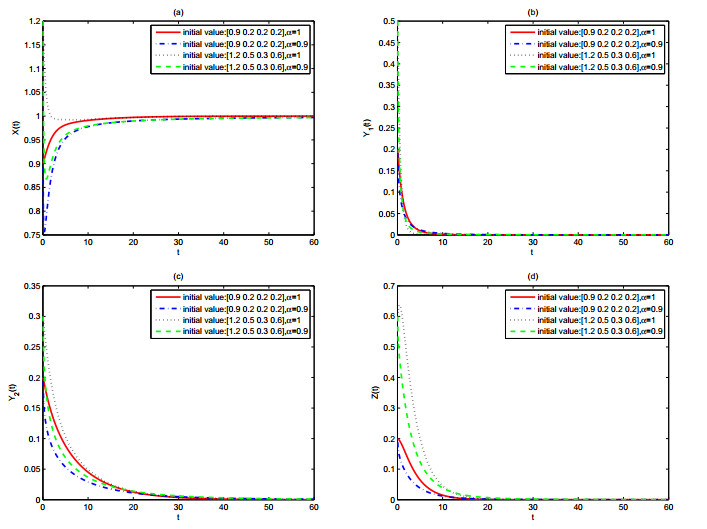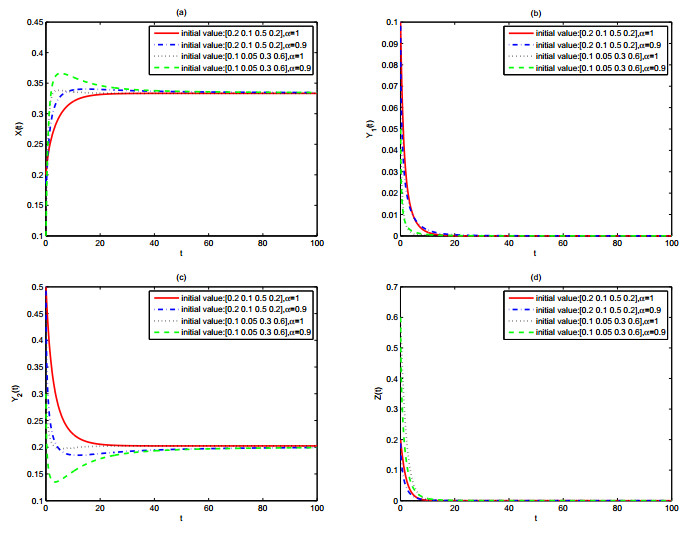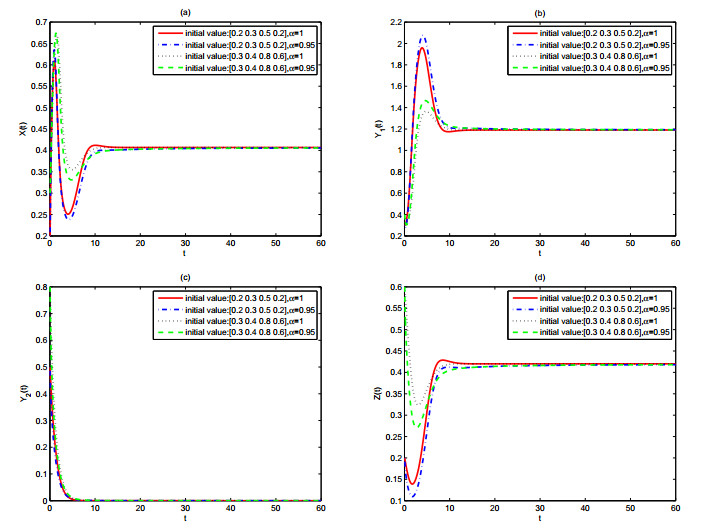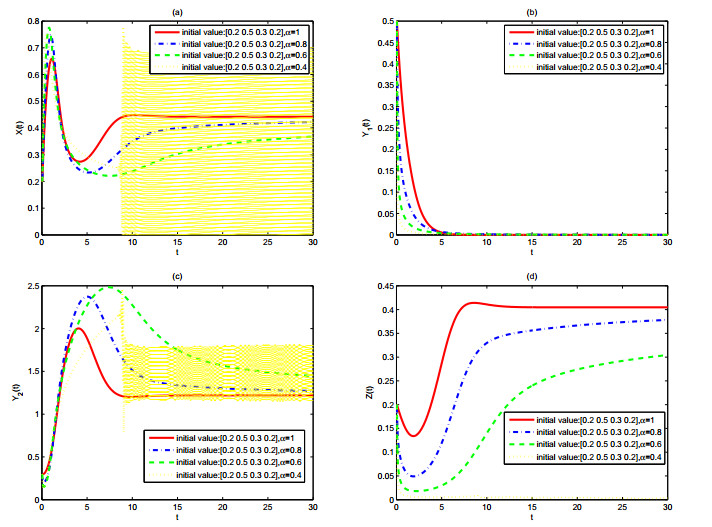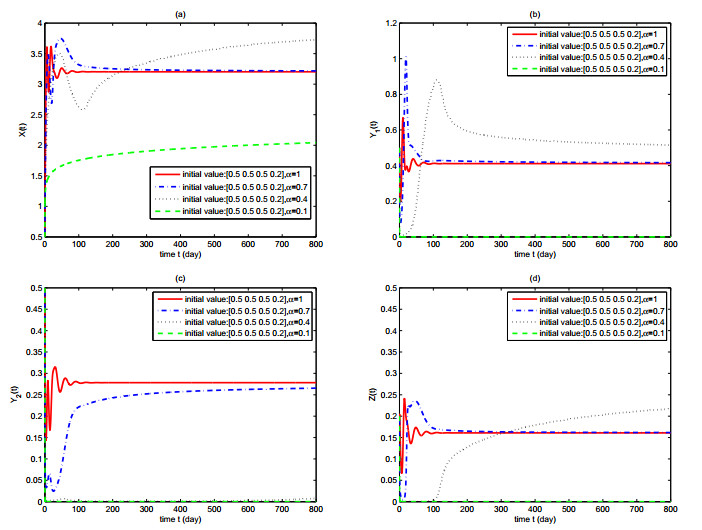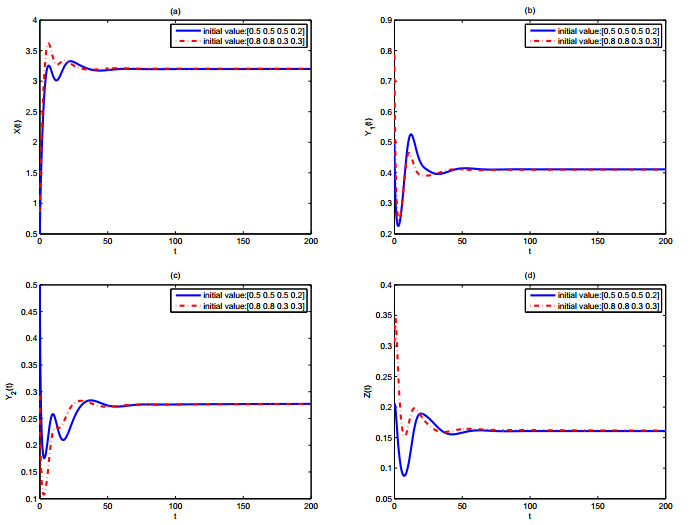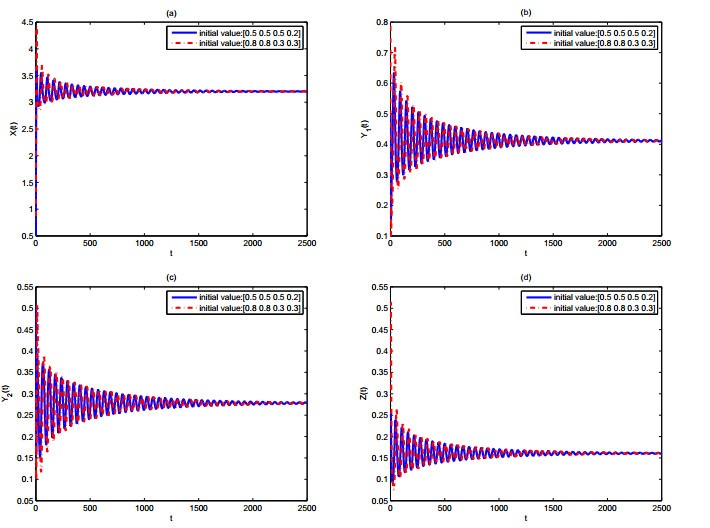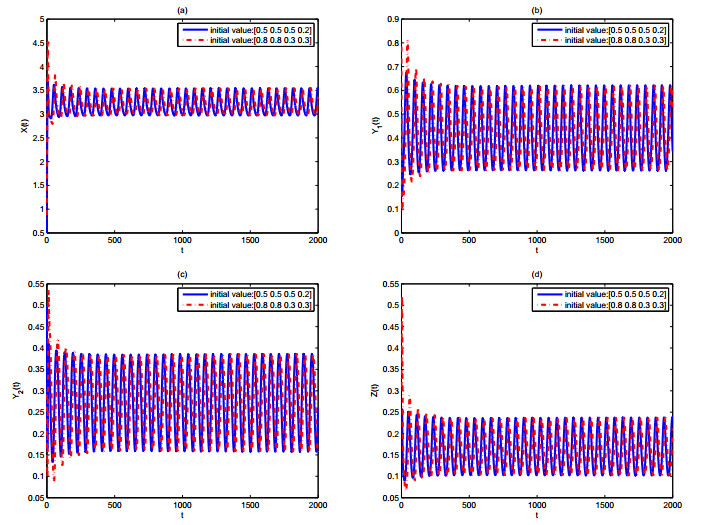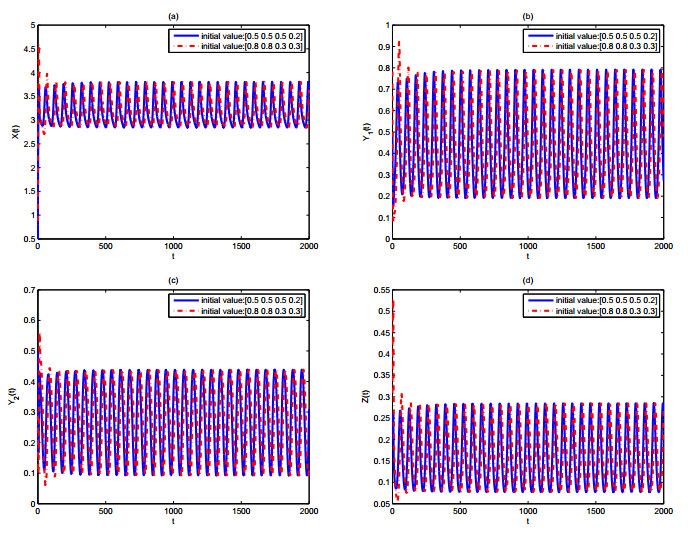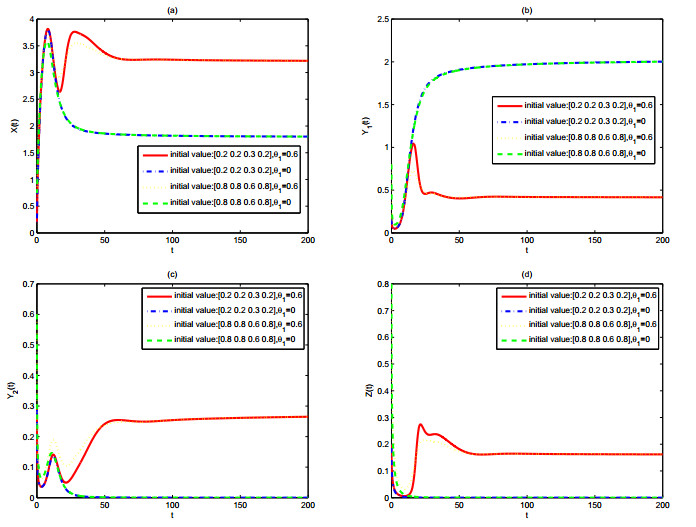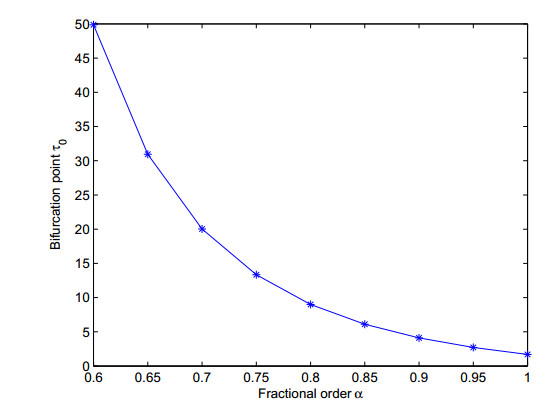This position paper is based on a major cooperative research and development proposal to form a Big Data Research, Analytics, and Information Network (BRAIN). Challenges presented by Big Data research are introduced and several projects are sketched in four important Big Data research theme areas, the solutions of which will further decision making in these areas of investigation. The four themes are large-scale data analytics and cloud computing, computational biology, health informatics, and interactive content analytics. These theme areas are certainly not inclusive, rather indicative of the wide variety to which Big Data now occupies decision analytics. The importance of training highly qualified personnel (HQP), knowledge mobilization and novelty are discussed.
1.
Introduction
Plankton includes plants and animals that float freely in some fresh water bodies, and almost all aquatic life is based on plankton [1]. Aquatic ecosystems are affected by many factors, including physical and chemical signals in the environment, plankton predation and competition [2,3]. Many scholars have carried out analysis concerning the impact of environment on the ecosystem and the treatment of sewage [4,5,6]. We also know how important plankton itself is to the wealth of marine ecosystems and ultimately to the planet itself. On the one hand, plankton species have positive effects on the environment, such as providing food for marine life, oxygen for animal life; on the other hand, it have harmful effects, such as economic losses to fisheries and tourism due to algae blooms [7,8].
In recent years, different models of plankton have been established and studied, for example, model with two harmful phytoplankton [9], models with time delays [10,11] and stochastic models [12,13,14]. Toxins produced by harmful phytoplankton tend to be concentrated at higher levels in the food web, as they can spread through the marine food web, affecting herbivores at higher nutrient levels, reaching fish, and through them eventually reaching marine mammals, even in seabirds [9,11]. There is also some evidence that the occurrence of toxin-producing phytoplankton is not necessarily harmful, but rather helps maintain a stable balance of nutrient dynamics through the coexistence of all species. These results suggest that toxin-producing phytoplankton (TPP) play an important role in the growth of zooplankton populations [15].
It was shown that aquatic plant systems not only have extraordinary memories of climatic events, but also exhibit phenomenological responses based on memory [16,17,18]. The authors noted that environmental factors often alter the expression of chromatin in multiple responsive genes in [19]. Environment-induced chromatin markers are at certain sites and is transmitted by cell division, allowing plants to acquire memories of environmental experiences. This ensures that the plant can adapt to changes in its environment or perform better if the event occurs again. In some cases, it is passed on to the next generation, namely, epigenetic mechanisms. This mechanism is crucial for plants' stress memory and adaptation to the environment, suggesting that plants do form memory and defense mechanisms in certain environments. In addition, a large amount of zooplankton chemical signal learning and corresponding reactions have been documented for aquatic systems [20,21]. In summary, such memory and genetic characteristics can not be neglected for plankton systems.
As we all know, fractional order derivatives are a good tool for describing the memory and genetic properties of various materials and processes. In other words, the application of fractional order dynamical systems can fully reflect some long-term memory and non-local effects. That is, fractional differential equations have an advantage over classical integer differential equations for describing such systems. In recent years, more and more researchers began to study the qualitative theory and numerical solution of fractional order biological model [22,23,24]. The main reason is that fractional order equations are naturally related to memory systems that exist in most biological systems [25,26]. In addition, fractional-order derivative has also been widely studied and applied in physics[27], engineering [28], biology [29] and many other fields [30,31,32]. At present, there are more than six definitions of fractional derivative, among which Riemann-Liouville and Caputo derivatives are the most commonly used [33]. In the case of fractional Caputo derivative, the initial conditions are expressed by the values of the unknown function and its integer derivative with clear physical meaning [34]. So we will adapt the Caputo's definition in our paper.
The interactions between phytoplankton and zooplankton do not occur instantaneously in real ecosystems. Instead, the response of zooplankton to contacts with phytoplankton is likely to be delayed due to gestation. For example, in [35], the authors discussed Hopf bifurcation in the presence of time delay required for toxin-phytoplankton maturation. The universality of time-delay coupled system indicates its importance, applicability and practicability in a wide range of biological systems [36,37]. In fact, time delay may change the qualitative behavior of dynamic system [38,39].
In [40], the authors considered a fractional nutrient-phytoplankton-zooplankton system as follows
Based on the above model, we classify phytoplankton into non-toxic phytoplankton and toxic phytoplankton and put forward an improved fractional order four-dimensional ecological epidemiological model with delay. The system is established as follows:
subjected to the biologically feasible initial condition:
where ϕ(t), ψ(t) and ζ(t) are continuous function defined on t∈[−τ,0].
The meaning of state variables and parameters are listed in Table 1; Dα (0<α<1) denotes Caputo fractional differential operator, and the model are based on the following scenarios:
(H1) X(t), Y1(t), Y2(t) and Z(t) represent nutrient population, phytoplankton population, toxic phytoplankton population and zooplankton population, respectively.
(H2) In real ecosystems, phytoplankton compete with each other for essential resources: nutrients and light. So as the model in the [41], we assume that, for nutrient X(t), phytoplankton population Y1(t) is in competition with toxic phytoplankton population Y2(t), h1 and h2 represent the influence on Y1(t) and Y2(t) in the competition, respectively.
(H3) Zooplankton do not grow instantaneously after consuming phytoplankton, and pregnancy of predators requires a discrete time delay τ.
(H4) Zooplankton populations feed only on phytoplankton, and only some of the dead phytoplankton and zooplankton are recycled into nutrients.
(H5) The toxic phytoplankton has both positive and negative effect on zooplankton, corresponding to the term θ2η2Y2(t−τ)Z(t−τ) and −δY2(t)Z(t) in the last equation of the system(1.2).
The above assumption (H5) is based on the result in [42]. In fact, the authors concluded that the food selection mechanism of plankton may not yet mature. When different algae of the same species (toxic and non-toxic) coexist, some zooplankton may have poor ability to select between toxic and non-toxic algae, and even show a slight preference for toxic strains.
The present paper is organized as follows. In section 2, some preliminaries are presented. In section 3, qualitative analysis of the system is performed. In section 4, some numerical examples and simulations are exploited to verify the theoretical results. In the last section, some conclusions and discussions are provided.
2.
Preliminaries
For convenience, we list some of the basic definitions and lemmas of the fractional calculus. In fractional-order calculus, there are many fractional-order integration and fractional-order differentiation that have been defined, for example, the Grunwald-Letnikov (GL) definition, the Riemann-Liouville (RL) definition and the Caputo definition. Since the initial condition is the same as the form of integral differential equation, we will adopt the definition of Caputo in this paper.
Definition 2.1. [34] The Riemann-Liouville fractional integral of order α>0 for a function f:R+→R is defined by
Based on this definition of Riemann-Liouville fractional integral, the fractional-order derivative in Riemann-Liouville sense and Caputo sense are given.
Definition 2.2. [34] The Riemann-Liouville fractional derivative of order α>0 for a function f:R+→R is defined by
where k−1≤α<k, k∈N and Γ(⋅) is the Gamma function, Γ(α)=∫+∞0tα−1e−tdt.
In particular, when 0<α<1, we have
Definition 2.3. [34] The Caputo fractional derivative of order α>0 for a function f:R+→R is defined by
where k−1≤α<k, k∈N and f(m)(t) is the m-order derivative of f(t). In particular, when 0<α<1, we have
Definition 2.4. [34] The two-parameter Mittag-Leffler function is defined by
When β=1, the two-parameter Mittag-Leffler function becomes to the one-parameter Mittag- Leffler function, i.e.
Theorem 2.5. [43] Consider the following commensurate fractional-order system:
with 0<α<1 and x∈Rn. The equilibrium points of the above system are calculated by solving the equation: f(x)=0. These points are locally asymptotically stable if all eigenvalues λi of the Jacobian matrix evaluated at the equilibrium points satisfy the inequality: |arg(λi)|>απ2.
3.
Qualitative analysis of the system (1.2)
3.1. The existence of equilibriums
Since the proof of the positivity and boundedness of the solution of the system(1.2) is similar to Theorem 2 and Theorem 3 in the Ref.[38], we will not prove it here.
The equilibriums of model (1.2) are obtained by solving the following algebraic system
By simple calculation, we obtain seven equilibriums of system (1.2), namely:
(1) E0=(X(0), 0, 0, 0) with X(0)=Λμ.
(2) E1=(X(1), Y(1)1, 0, 0) with X(1)=μ1k1b1, Y(1)1=μ(1−R1)b1(c1R1b1X(0)−1), where R1=X(0)X(1). And the feasibility conditions for E1 are simplified as:
(3) E2=(X(2), 0, Y(2)2, 0) with X(2)=μ2k2b2, Y(2)2=μ(1−R2)b2(c2R2b2X(0)−1), where R2=X(0)X(2). And the feasibility conditions for E2 are simplified as:
(4) E3=(X(3), Y(3)1, Y(3)2, 0) with Y(3)1=k2b2X(3)−μ2h2, Y(3)2=k1b1X(3)−μ1h1, and X(3) is uniquely determined by the following equation:
where
If Λ>μ2c1h2+μ1c2h1, then Descartes rule of sign ensures that the above Eq.(3.2) possesses a uniquely positive root. And the feasibility conditions for E3 are simplified as:
(5) E4=(X(4), Y(4)1, 0, Z(4)) with
The feasibility conditions of E4 are simplified as:
(6) E5=(X(5), 0, Y(5)2, Z(5)) with
Considering the biological background, we assume θ2η2>δ is reasonable, and the feasibility conditions for E5 are simplified as:
(7) E6=(X(6), Y(6)1, Y(6)2, Z(6)) with
Z(6)=(θ1η1h1k2b2+θ2η2h2k1b1−δh2k1b1)X(6)+δh2μ1−θ1η1h1μ2−θ2η2h2μ1−μ3h1h2η1(θ1η2h1+θ2η2h2−δh2). And X(6) is uniquely determined by the following equation:
where
If b1b3<0, then Descartes rule of sign ensures that the above Eq.(3.3) possesses a uniquely positive root. The feasibility conditions for E6 are simplified as: Y(6)1,Y(6)2,Z(6)>0,b1b3<0.
Remark 3.1. (1) The necessary conditions for the existence of E3 are R1>1 and R2>1.
(2) Because of the complexity of computation, we have not obtain the exact formula of positive equilibrium E6.
3.2. Local stability of Equilibriums
In this subsection we discuss the stability of each equilibrium when τ = 0.
Obviously, the eigenvalues of the Jacobian matrix of system (1.2) at equilibrium E0 are λ1=−μ<0, λ2=−μ3<0, λ3=k1b1X(0)−μ1, λ4=k2b2X(0)−μ2, so we get the following result.
Theorem 3.2. If R1<1 and R2<1, then the disease-free equilibrium E0 is locally asymptotically stable and it is unstable if R1>1 or R2>1.
The Jacobian matrix of system (1.2) at equilibrium E1 is
The characteristic equation at the equilibrium E1 is
Thus, we get the following result.
Theorem 3.3. If 1<R1<X(0)b1c1, R2<R1 and μ3>θ1η1Y(1)1, then the equilibrium E1 is locally asymptotically stable.
The Jacobian matrix of system (1.2) at equilibrium E2 is
The characteristic equation at the equilibrium E2 is
So we get the following result.
Theorem 3.4. If 1<R2<X(0)b2c2, R2>R1 and μ3>(θ2η2−f)Y(2)2, then the equilibrium E2 is locally asymptotically stable.
The Jacobian matrix of system (1.2) at equilibrium E3 is
with the characteristic equation
where
Denote D(P) denote the discriminant of a polynomial
Q(λ)=λ3+A1λ2+A2λ+A3. Then
D(Q)=18A1A2A3+(A1A2)2−4A3A31−4A32−27A33.
If μ3>θ1η1Y(3)1+θ2η2Y(3)2−δY(3)2, in order to discuss the stability of the equilibrium E3, we get the following result by use of the same method as in Ref [44].
Proposition 3.5. The equilibrium E3 is asymptotically stable if one of the following conditions holds for polynomial Q and D(Q):
(1)D(Q)>0,A1>0,A3>0 and A1A2>A3.
(2)D(Q)<0,A1≥0,A2≥0,A3≥0 and α<23.
The Jacobian matrix of system (1.2) at equilibrium E4 is
where
The characteristic equation at the equilibrium E4 is
where
Denote D(P) denote the discriminant of a polynomial
Q(λ)=λ3+B1λ2+B2λ+B3. Then
D(Q)=18B1B2B3+(B1B2)2−4B3B31−4B32−27B33.
If μ2>k2b2X(4)−η2Z(4)−h2Y(4)1, in order to discuss the stability of the equilibrium E4, we get the following result by use of the same method as in Ref [44].
Proposition 3.6. The equilibrium E4 is asymptotically stable if one of the following conditions holds for polynomial Q and D(Q):
(1)D(Q)>0,B1>0,B3>0 and B1B2>B3.
(2)D(Q)<0,B1≥0,B2≥0,B3≥0 and α<23.
The Jacobian matrix of system (1.2) at equilibrium E5 is
where
The characteristic equation at the equilibrium E5 is
where
Denote D(P) denote the discriminant of a polynomial
Q(λ)=λ3+C1λ2+C2λ+C3. Then
D(Q)=18C1C2C3+(C1C2)2−4C3C31−4C32−27C33.
If μ1>k1b1X(5)−η1Z(5)−h1Y(5)2, in order to discuss the stability of the equilibrium E5, we get the following result by use of the same method as in Ref [44].
Proposition 3.7. The equilibrium E5 is asymptotically stable if one of the following conditions holds for polynomial Q and D(Q):
(1)D(Q)>0,C1>0,C3>0 and C1C2>C3.
(2)D(Q)<0,C1≥0,C2≥0,C3≥0 and α<23.
Theorem 3.8. The equilibrium E6 is locally asymptotically stable if the following conditions hold:
(H5) X(6)>max{c1b1, c2b2},
(H6) k1b1η1<k2b2η2,
(H7) k3>η2(μ+b1Y(6)1+b2Y(6)2)c3b2,
(H8) (e1e2−e3)e3−e4e21>0.
Proof. The Jacobian matrix of system (1.2) at equilibrium E6 is
where
The characteristic equation at the equilibrium E6 is
where
By simple calculation, if X(6)>max{c1b1, c2b2}, then e1e2>e3; if k3>η2(μ+b1Y(6)1+b2Y(6)2)c3b2 and k1b1η1<k2b2η2, then e4>0. In summary, the condition of the Routh-Hurwitz criterion above is satisfied for Eq.(3.9), that is,
hold. So, all the roots of this Eq.(3.9) have negative real part. This ends the proof.
Remark 3.9 In Theorem (3.8), (H5)-(H8) is a sufficient condition for equilibrium E6 to be stable, and the necessary and sufficient condition for E6 to be stable is all roots of Eq.(3.9) satisfy |arg(λi)|>απ2.
3.3. Hopf bifurcation
In this subsection, according to the research methods in literature [22,38,45], we study the Hopf bifurcation with time delay as the parameter.
we will analyze the Hopf bifurcation of E6 when τ>0, and the characteristic equation at the equilibrium E6 is
where
Assume that s=iω=ω(cosπ2+isinπ2), ω>0 is a root of Eq.(3.10).
Substituting s=iω into Eq.(3.10), one gets
and separating the real and imaginary parts of it, it results in
Ri,Ii are defined as follows:
It can be acquired from Eq. (3.12) that
Adding the squares of the two equations of Eq.(3.12), we obtain
where M is a polynomial containing ω7α, ω6α, ω5α, ω4α, ω3α, ω2α, ωα, and N is a constant.
Define
Suppose that N<0. Thus, h(ω) has at least one positive root. The delay τ is regarded as a bifurcation parameter. Let s(ω)=ξ(τ)+iω(τ) be the Eq.(3.10) such that for some initial value of the bifurcation parameter τ0 we have ξ(τ0)=0, ω(τ0)=ω0. Without loss of generality, we assume ω(0)>0. From Eq.(3.13), one can conclude
where
To derive the condition of the occurrence for Hopf bifurcation, we have the following Lemma.
Lemma 3.10. Assume that N<0, then Hopf bifurcation occurs provided h′(ω0)≠0.
Proof. Differentiating both sides of Eq.(3.10) with respect to τ, it can be obtained that
Hence, one gets
Substitute s=iω0 into Eq.(3.17), we have
where
then sign{dRe(λ)dτ|τ=τ0}=sign{Re[(dλdτ)−1|τ=τ0]}=sign{h′(ω0)}.
Obviously, if h′(ω0)≠0 the transversality condition holds, and Hopf bifurcation occurs at τ=τ0.
Theorem 3.11. Suppose that (H5)-(H8) and N<0 hold, then the positive equilibrium E6 of system (1.2) is asymptotically stable when τ∈[0,τ0), h′(ω0)<0 and unstable when τ>τ0, h′(ω0)>0. When τ=τ0, h′(ω0)≠0 a Hopf bifurcation occurs, that is a family of periodic solutions bifurcates from E6 as τ passes through the critical value τ0.
4.
Numerical simulations
In this section, some numerical examples are presented to verify the theoretical results. The simulation are based on Adama-Bashforth-Moulton predictor-corrector scheme [46].
Example 1. For the following set of parameters: Λ= 1, b1= 0.3, b2= 0.25, c1= 0.06, c2= 0.06, c3= 0.06, k1= 0.7, k2= 0.7, η1= 2.1, η2= 0.2, μ= 1, μ1= 0.5, μ2= 0.3, μ3= 0.3, θ1= 0.6, θ2= 0.7, δ= 0.1, h1= 0.2, h2= 0.1.
In this case R1=0.42<1, R2=0.5833<1. From Figure 1, we can see that the equilibrium E0=(1, 0, 0, 0) is stable for different values of α and different sets of initial values: [X(0), Y1(0), Y2(0), Z(0)]=[0.9, 0.2, 0.2, 0.2], [1.2, 0.5, 0.3, 0.6].
Example 2. For the following set of parameters: Λ= 0.5, b1= 2.5, b2= 0.3, c1= 0.01, c2= 0.01, c3= 0.06, k1= 0.5, k2= 0.7, η1= 0.2, η2= 2.1, μ= 1, μ1= 0.3, μ2= 0.5, μ3= 0.3, θ1= 0.5, θ2= 0.1, δ= 0.01, h1= 0.2, h2= 0.1.
In this case, 1<R1=2.0833<X(0)b1c1, R2=0.21<R1 and μ3>θ1η1Y(1)1. From Figure 2, we can see that the equilibrium E1=(0.24, 0.4407, 0, 0) is stable for different values of α and different sets of initial values: [X(0), Y1(0), Y2(0), Z(0)]=[0.1,0.6, 0.5, 0.2], [0.2,0.5, 0.8, 0.6].
Example 3. For the following set of parameters: Λ= 0.5, b1= 0.3, b2= 2.5, c1= 0.01, c2= 0.01, c3= 0.06, k1= 0.5, k2= 0.6, η1= 2.1, η2= 0.2, μ= 1, μ1= 0.3, μ2= 0.5, μ3= 0.5, θ1= 0.1, θ2= 0.1, δ= 0.01, h1= 0.2, h2= 0.1.
In this case, 1<R2=1.5<X(0)b2c2, R2>R1 and μ3>(θ2η2−f)Y(2)2. From Figure 3, we can see that the equilibrium E2=(0.3333, 0, 0.2024, 0) is stable for different values of α and different sets of initial values: [X(0), Y1(0), Y2(0), Z(0)]=[0.2, 0.1, 0.5, 0.2], [0.1, 0.05, 0.3, 0.6].
Remark 4.1. The above three examples corresponding to the following ecological interpretation.
(1) Figure 1 indicates that if R1<1, R2<1, then the phytoplankton can not survive and the zooplankton will also die out. However, this phenomenon usually does not happen in the real world.
(2) Figure 2 indicates that if R1>1, R1>R2, then the non-toxic phytoplankton will win the competition between phytoplankton and toxic phytoplankton, while the zooplankton will die out due to excessive mortality.
(3) Figure 3 indicates that if R2>1, R2>R1, then the toxic phytoplankton will win the competition between phytoplankton and toxic phytoplankton, while the zooplankton will die out due to excessive mortality.
Example 4. For the following set of parameters: Λ= 1.4, b1= 2.8, b2= 2.3, c1= 0.01, c2= 0.01, c3= 0.06, k1= 0.95, k2= 0.1, η1= 2.1, η2= 0.26, μ= 0.2, μ1= 0.2, μ2= 0.8, μ3= 0.5, θ1= 0.2, θ2= 0.5, δ= 0.01, h1= 0.1, h2= 0.1.
In this case, simple calculation indicates that the sufficient condition (2) of Proposition 3.6 is satisfied. From Figure 4 we can see that the equilibrium E4=(0.4067, 1.1905, 0, 0.4199) is stable for different values of α and different sets of initial values: [X(0), Y1(0), Y2(0), Z(0)]=[0.2, 0.3, 0.5, 0.2], [0.3, 0.4, 0.8, 0.6].
Example 5. For the following set of parameters: Λ= 1.4, b1= 2.3, b2= 2.5, c1= 0.01, c2= 0.01, c3= 0.06, k1= 0.1, k2= 0.95, η1= 0.26, η2= 2.1, μ= 0.2, μ1= 0.8, μ2= 0.2, μ3= 0.5, θ1= 0.5, θ2= 0.2, δ= 0.01, h1= 0.1, h2= 0.1.
In this case, simple calculation indicates that the sufficient condition (2) of Proposition 3.7 is satisfied. From Figure 5 we can see that the equilibrium E5=(0.4422, 0, 1.2195, 0.4048) is stable for different values of α and different sets of initial values: [X(0), Y1(0), Y2(0), Z(0)]=[0.2, 0.5, 0.3, 0.2], [0.3, 0.8, 0.4, 0.6].
Remark 4.2. The above examples corresponding to the following ecological interpretation.
(1) Figure 4 indicates that if the toxic phytoplankton is less competitive than the non-toxic phytoplankton, then the toxic phytoplankton will die out.
(2) Figure 5 indicates that if the toxic phytoplankton win the competition between non-toxic phytoplankton and toxic phytoplankton, then the zooplankton may still survive under certain conditions, that is, nutrients, toxic phytoplankton and zooplankton may theoretically coexist. However, this phenomenon usually does not appear in real world.
(3) From Figures 1–5 we can see that as the value of α decreases, the steady speed becomes slow for each equilibrium. This indicates that the value of α has obvious effects on the dynamical behaviors of the system.
Example 6. For the following set of parameters: α= 0.8, Λ= 1.4, b1= 0.32, b2= 0.54, c1= 0.06, c2= 0.08, c3= 0.6, k1= 0.7, k2= 0.6, η1= 1.8, η2= 0.6, μ= 0.2, μ1= 0.4, μ2= 0.9, μ3= 0.5, θ2= 0.5, δ= 0.1, h1= 0.1, h2= 0.1.
In this example, we will consider the influence of toxic, i.e., θ1. Here, we choose θ1=0,0.6, with the initial conditions: [X(0), Y1(0), Y2(0), Z(0)] = [0.2, 0.2, 0.3, 0.2], [0.8, 0.8, 0.6, 0.8].
Example 7. In this example, we will consider the influence of α.
(1) For the following set of parameters: Λ= 1.4, b1= 2.3, b2= 2.5, c1= 0.01, c2= 0.01, c3= 0.06, k1= 0.1, k2= 0.95, η1= 0.26, η2= 2.1, μ= 0.2, μ1= 0.8, μ2= 0.2, μ3= 0.5, θ1= 0.5, θ2= 0.2, δ= 0.01, h1= 0.1, h2= 0.1, with the initial conditions: [X(0), Y1(0), Y2(0), Z(0)] = [0.2, 0.5, 0.3, 0.2].
(2) For the following set of parameters: Λ= 1.4, b1= 0.32, b2= 0.54, c1= 0.06, c2= 0.08, c3= 0.6, k1= 0.7, k2= 0.6, η1= 1.8, η2= 0.6, μ= 0.2, μ1= 0.4, μ2= 0.9, μ3= 0.5, θ1= 0.6, θ2= 0.5, δ= 0.1, h1= 0.1, h2= 0.1, with the initial conditions: [X(0), Y1(0), Y2(0), Z(0)] = [0.5, 0.5, 0.5, 0.2].
Remark 4.3. (1) From Figure 7, we can see that if the value of α is relatively big(i.e., α = 1, 0.8), then the equilibrium E5 is locally stable; if the value of α is relatively small(i.e., α = 0.4), then the equilibrium is unstable, and oscillation may occur.
(2) From Figure 8, we can see that if the value of α is relatively big(i.e., α = 1, 0.7), then the equilibrium E6 is locally stable; if the value of α is relatively small(i.e., α = 0.1), then the equilibrium E0 is locally stable.
(3) Figure 7 and Figure 8 indicate that if the value of α is relatively small, the system will be destabilized.
Example 8. For the following set of parameters: α= 0.89, Λ= 1.4, b1= 0.32, b2= 0.54, c1= 0.06, c2= 0.08, c3= 0.6, k1= 0.7, k2= 0.6, η1= 1.8, η2= 0.6, μ= 0.2, μ1= 0.4, μ2= 0.9, μ3= 0.5, θ1= 0.6, θ2= 0.5, δ= 0.1, h1= 0.1, h2= 0.1.
In this example, the equilibrium E6=(3.2026, 0.4114, 0.2784, 0.1608), and our main aim is to study the effect of time delay on the stability of the system.
(1) From Figure 9, we can see that if τ=0, then the equilibrium E6 is stable with different sets of initial value: [X(0), Y1(0), Y2(0), Z(0)]=[0.5, 0.5, 0.5, 0.2], [2.8, 1.8, 3.3, 1.3].
(2) From Figure 10, we will see that if τ=3<τ0≈4.4671, then the equilibrium E6 is stable with different sets of initial value: [X(0), Y1(0), Y2(0), Z(0)]=[0.5, 0.5, 0.5, 0.2], [2.8, 1.8, 3.3, 1.3].
(3) From Figure 11, we can see that if τ=4.2<τ0≈4.4671, then the equilibrium E6 is stable with different sets of initial value: [X(0), Y1(0), Y2(0), Z(0)]=[0.5, 0.5, 0.5, 0.2], [2.8, 1.8, 3.3, 1.3].
(4) From Figure 12, we will see that if τ=5>τ0≈4.4671, then periodic oscillation occurs, and the equilibrium E6 will lose its stability and periodic solutions appear through Hopf bifurcation, with different sets of initial value: [X(0), Y1(0), Y2(0), Z(0)]=[0.5, 0.5, 0.5, 0.2], [0.8, 0.8, 0.3, 0.3].
(5) From Figure 13, we can see that if τ=6>τ0≈4.4671, then similar periodic oscillation occurs as that in Figure 12, but with larger amplitude.
Remark 4.4. From the above example, we can see that the time delay has an effect of destabilizing the equilibrium E6. In other words, the larger the value of time delay is, the more possible that the equilibrium E6 lose its stability.
5.
Discussion
In this paper, a fractional-order mathematical model is constructed to describe the active of nutrient-phytoplankton-toxic phytoplankton-zooplankton.
Through qualitative analysis, we get the following results.
◊ We figure out the sufficient conditions for the existence and local stability of E0, E1, E2, E3, E4, E5, E6 for τ=0.
◊ By using time delay as a bifurcation parameter, the existence of Hopf bifurcation is analyzed in detail. We find that if τ<τ0, then the equilibrium E6 is locally stable; while it is unstable if τ>τ0 and Hopf bifurcation may occur near τ0.
Through numerical simulation we get the following results.
◊ Figure 1 shows the stability of equilibrium E0 for different values of α.
◊ Figure 2 shows the stability of equilibrium E1 for different values of α.
◊ Figure 3 shows the stability of equilibrium E2 for different values of α.
◊ Figure 4 shows the stability of equilibrium E4 for different values of α.
◊ Figure 5 shows the stability of equilibrium E5 for different values of α.
◊ Figure 6 shows the effect of parameter θ1 on the system (1.2).
◊ Figure 7 and Figure 8 indicate that the value of α is closely relate to the stability of each equilibrium. The stability of each equilibrium becomes weaker as the value of α decreases.
◊ Figures 9–11 show that E6 is stable if τ∈[0,τ0); Figures 12–13 show that E6 is unstable if τ>τ0 and periodic oscillation may occur; Figures 9–13 indicate that the impact of τ on the dynamics of the system is crucial.
◊ Table 2 and Figure 14 show that the value of τ0 arises as the value of α increases.
Remark 5.1. When τ=0, Y1=Y2 and h1=h2=0, then system (1.2) will degenerated to the model in [40].
In the model of this paper, phytoplankton is divided into two class, non-toxic phytoplankton and toxic phytoplankton. Some experimental data suggested that some zooplankton are capable of selecting for nontoxic phytoplankton, a mechanism that allows toxic phytoplankton to coexist with nontoxic phytoplankton [47]. This is also consistent with the results in Figure 9. Although some zooplankton have the ability to distinguish between toxic and non-toxic plants, some other experiments have shown that some zooplankton might not be able to distinguish between toxic and nontoxic algae, even shows a slight preference for toxic strains [48,49]. We can find from Figure 6 that once non-toxic phytoplankton become scarce, the zooplankton start to eat the toxic phytoplankton, even if the toxicity is weak, the zooplankton may become extinct. This is dangerous for the ecosystem.
Remark 5.2. Any ecosystem depends on the natural environment, and in the real natural environment there are more or less physical and chemical signals that interact with the ecosystem. This motivate us to consider stochastic effects to the ecosystem, that is, white noise should be included into the system. We leave this as our next work.
6.
Authors contributions
Each of the authors, Ruiqing Shi, Jianing Ren, Cuihong Wang contributed to each part of this work equally and read and approved the final version of the manuscript.
7.
Acknowledgements
This work is partly supported by National Natural Science Foundation of China (No. 61907027). The authors would like to thank the anonymous reviewers for their helpful comments, which improved the quality of this paper greatly.
Conflict of interest
The authors declare that they have no financial or non-financial competing interests.









 DownLoad:
DownLoad:
